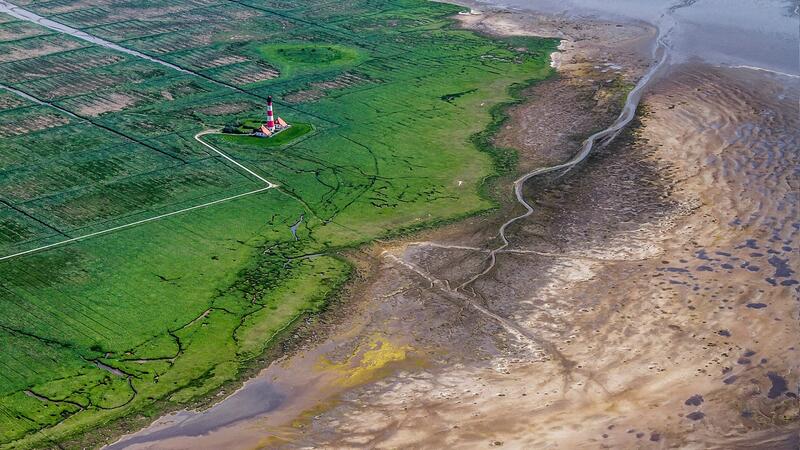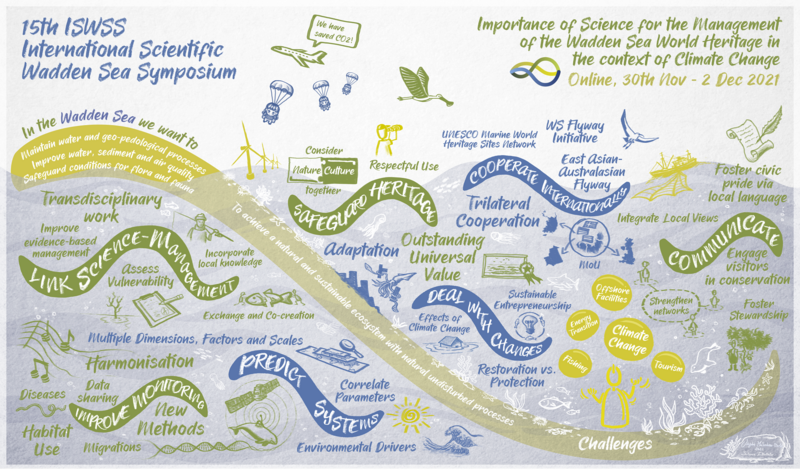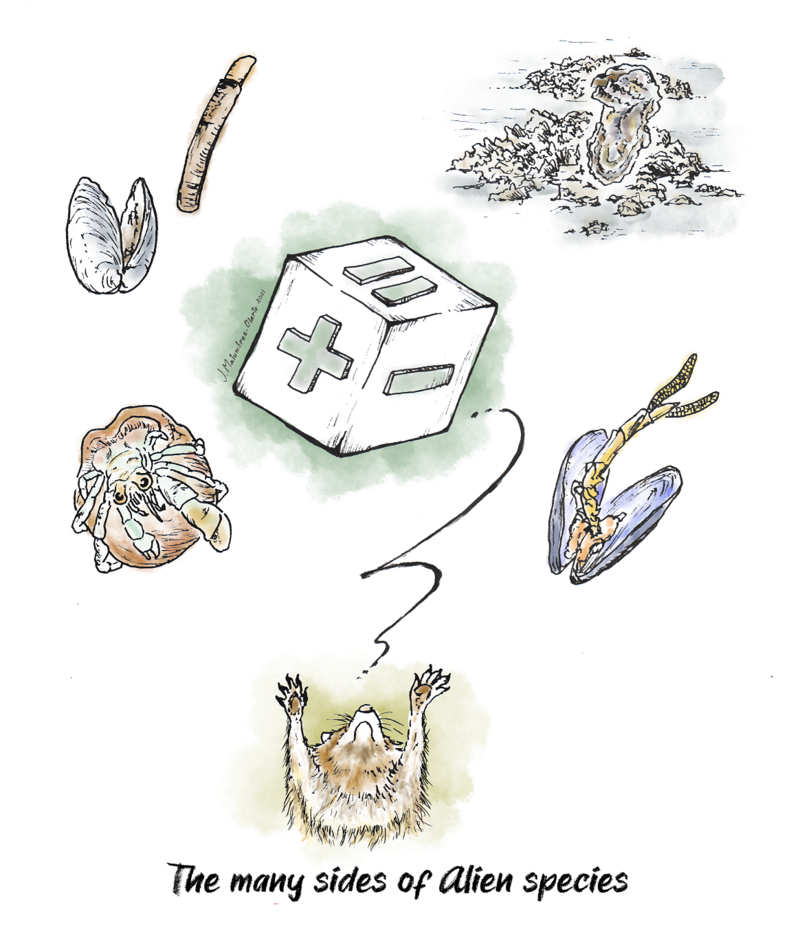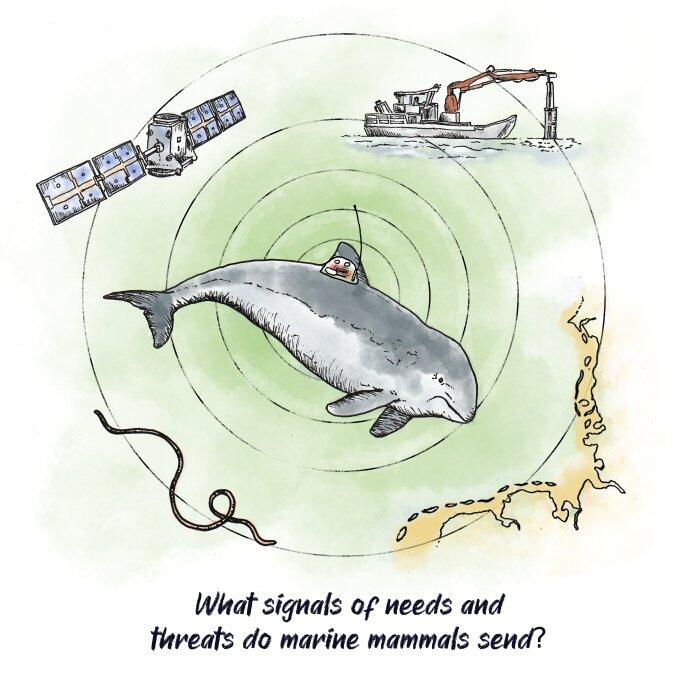Forskere vurderer, at Vadehavet er i alvorlig fare på grund af klimaforandringer

I perioden 30/11 til 2/12-2021 præsenterede og diskuterede mere end 200 forskere fra Danmark, Tyskland og Nederlandene de seneste videnskabelige resultater angående UNESCO Verdensarv Vadehavets status ved det 15. Vadehavs Symposium (ISWSS). Eventet var oprindeligt planlagt som et fysisk møde, men blev i stedet afholdt online.
Klimaforandringer og de tilhørende havniveaustigninger er anset for at være blandt de største trusler mod Vadehavets globale og unikke økosystem. Disse truslers indvirkning på Vadehavets biodiversitet og dets geologiske dynamik, samt mulige beskyttelsesforanstaltninger, var i fokus på symposiet.
Symposiets deltagere undersøgte klimaforandringernes påvirkning på Vadehavet ud fra følgende hovedområder: fugle, havpattedyr, nye arter, kystnære marine levesteder og socioøkonomisk/økologisk bæredygtig udvikling. Udover de forskellige præsentationer af de seneste forskningsresultater og anbefalinger for forvaltningen af Vadehavet, blev behovet for yderligere forskning formuleret og diskuteret af ekspertgrupperne i forbindelse med hvert hovedområde.
”Det konstant høje antal at nye arter, der med succes etablerer sig i Vadehavet, viser hvilken indflydelse den menneskelige faktor har” siger Christian Buschbaum, marinbiolog ved Alfred Wegener Institute på øen Sild. Dr. Buschbaum ledede sessionen om nye arter. ”Den globale søfart er med til at introducere nye arter, som grundet den globale opvarmning finder gode vækstbetingelser i Vadehavet. Et centralt spørgsmål for forskningen, er, hvilken effekt disse nye arter har på økosystemet, og det er fortsat en vigtig international opgave at udvikle metoder til at forhindre yderligere spredning af nye arter.”
Udover egne fokusområder, bød Vadehavs Symposiet også på udvalgte internationale Verdensarvseksperter og gæstetalere fra det koreanske Getbol-vådområde, der i sommeren 2021 blev tilføjet til UNESCOs verdensarvsliste.
Ved afslutningen på det tre dage lange møde, opsummerede formanden for Vadehavets bestyrelse, symposiets resultater: ”Videnskaben viser, at Verdensarv Vadehavet allerede er betydeligt påvirket af klimaforandringer. Dette symposium ligger særlig vægt på nødvendigheden i at øge udvekslingen af data og informationer mellem de tre Vadehavslande for at kunne tilpasse forvaltningen og beskyttelsen af Vadehavet til dets nye udfordringer”, sagde professor Dr. Karin Lochte. ”Jeg er meget taknemmelig for det gode internationale samarbejde, som gør det muligt at adressere de store udfordringer i forbindelse med beskyttelsen og forvaltningen af dette følsomme økosystem.”
Resultaterne fra den videnskabelige diskussion vil danne rammen for ministererklæringen ved den næste Trilaterale Regeringskonference for de tre Vadehavslande. Konferencen udstikker den politiske kurs for beskyttelsen af Vadehavet i de kommende år og den finder sted i Wilhelmshaven i slutningen af 2022 på invitation af den tyske regering, hvilket også markerer slutningen af det tyske formandskab i det Trilaterale Vadehavssamarbejde. De videnskabelige resultater bliver også publiceret under titlen "Biodiversity and Ecology of the Wadden Sea under changing environments” i tidsskriftet ”Marine Biodiversity”.
“Det virtuelle Vadehavs Symposium blev taget rigtig godt imod. Takket være den multifunktionelle platform, fungerede den kollegiale sparring også rigtig godt”, sagde en tilfreds Marina Sanna fra Nationalpark Forvaltningen ”Schleswig-Holsteinisches Wattenmeer”, som var med til at organisere symposiet. ”Dette var en fantastisk afslutning på årets Nationalparktema ”Science in the Wadden Sea – uncovering the hidden.”
Det 15. Vadehavs Symposium blev organiseret af Nationalpark Forvaltningen ”Schleswig-Holsteinsches Wattenmeer” i samarbejde med det tyske Forbundsministerium for Miljø og Det Fælles Vadehavssekretariat (CWSS). Inden for rammerne af det Trilaterale Samarbejde for beskyttelsen af Vadehavet, afholdes dette event ét år før afslutningen på et af de tre Vadehavslandes formandskab. Det sidste videnskabelige symposium blev afholdt i Tønder i 2017, da Danmark havde formandskabet.
>> Symposium Report
A visual take on ISWSS15
Science illustrator and researcher Jagoba Malumbres-Olarte listen in to the thematic sessions of the symposium. Below he explains his illustrations.
Overall illustration
 The overall illustration of the symposium highlights some of the main discussions as well as the general character of the event, starting with the fact that it had to be moved online at last minute - saving CO2 from the cancelled travel plans. With the Trilateral Wadden Sea Cooperation's Guiding Principle running through the image, its main challenges are shown in balls, needing to be juggled at the same time. Calls for action include safeguarding the Wadden Sea World Heritage, coorperating internationally, dealing with changes, linking science and management, improving monitoring, trying to predict the system and communicating the Wadden Sea.
The overall illustration of the symposium highlights some of the main discussions as well as the general character of the event, starting with the fact that it had to be moved online at last minute - saving CO2 from the cancelled travel plans. With the Trilateral Wadden Sea Cooperation's Guiding Principle running through the image, its main challenges are shown in balls, needing to be juggled at the same time. Calls for action include safeguarding the Wadden Sea World Heritage, coorperating internationally, dealing with changes, linking science and management, improving monitoring, trying to predict the system and communicating the Wadden Sea.
Alien Species
 The image shown here symbolises the current debate about alien (exotic, non-native) species in the Wadden Sea: how alien species should be treated in the Wadden Sea. As discussed in the alien species session during the Symposium, these species may have positive, negative or no effects (shown on the different sides of the die) for local biodiversity and society: the saltwater clam Ruditapes phlippinarum and razor clam Ensis leei (top left); the habitat changing oyster Magallana gigas (top right); the intestinal copepod parasite of bivalves Mytilicola orientalis, (illustrated with a native blue mussel, bottom right); the hermit crab Diogenes pugilator (bottom left); and the racoon dog (bottom).
The image shown here symbolises the current debate about alien (exotic, non-native) species in the Wadden Sea: how alien species should be treated in the Wadden Sea. As discussed in the alien species session during the Symposium, these species may have positive, negative or no effects (shown on the different sides of the die) for local biodiversity and society: the saltwater clam Ruditapes phlippinarum and razor clam Ensis leei (top left); the habitat changing oyster Magallana gigas (top right); the intestinal copepod parasite of bivalves Mytilicola orientalis, (illustrated with a native blue mussel, bottom right); the hermit crab Diogenes pugilator (bottom left); and the racoon dog (bottom).
Marine Mammals
 This image resumes the research subjects of the seminars presented in the marine mammal session of the Symposium: the species monitoring using telemetry; the (intertidal) habitats used and needed by the different species; the effects of anthropogenic activities (e.g. through noise); and the impact of diseases on the reproduction and population demographics. All these factors must be considered for the management of marine mammals in the Wadden Sea.
This image resumes the research subjects of the seminars presented in the marine mammal session of the Symposium: the species monitoring using telemetry; the (intertidal) habitats used and needed by the different species; the effects of anthropogenic activities (e.g. through noise); and the impact of diseases on the reproduction and population demographics. All these factors must be considered for the management of marine mammals in the Wadden Sea.
Birds
 The birds in this image represent the migration through he Wadden Sea that may be determined by the resources available in the area (the tern with the suitcase and the fish-looking islands) and the genetic trigger in each species (Numenius arquata and the DNA helix).
The birds in this image represent the migration through he Wadden Sea that may be determined by the resources available in the area (the tern with the suitcase and the fish-looking islands) and the genetic trigger in each species (Numenius arquata and the DNA helix).
Sublittoral Habitats
 This image shows the mapping of sublittoral habitats by a research vessel using scan sonars and the four current features of/initiatives in these habitats in the Wadden Sea: the invasion of Ensis leei and Magallana gigas (bottom); the evaluation surveys on native Mytilus edulis musselbeds (second from the bottom); the restoration of Zostera seagrass (third from the bottom); and the decline of reef-forming Sabellaria spinulosa worms. The upwards direction of the sea represents the rise in the sea level.
This image shows the mapping of sublittoral habitats by a research vessel using scan sonars and the four current features of/initiatives in these habitats in the Wadden Sea: the invasion of Ensis leei and Magallana gigas (bottom); the evaluation surveys on native Mytilus edulis musselbeds (second from the bottom); the restoration of Zostera seagrass (third from the bottom); and the decline of reef-forming Sabellaria spinulosa worms. The upwards direction of the sea represents the rise in the sea level.
Sustainable Development - Ecology
 The image shows the “Pandora’s Box” of the measurement of biodiversity change (in multiple dimensions), which could assist us understand the drivers behind it, necessary for ecosystem status assessments in the face of climate change. These measurements and assessments may show how the recovery of seegrass habitats may be achieved and what effects climate change may have on the carbon sequestrated in salt marshes. The worms represent the effects of bioturbation on sediments (not fully understand) and the map of the Wadden Sea on the side of the box is a hint on the effects of climate change on the phenology (migration patterns) of certain species like the plaice.
The image shows the “Pandora’s Box” of the measurement of biodiversity change (in multiple dimensions), which could assist us understand the drivers behind it, necessary for ecosystem status assessments in the face of climate change. These measurements and assessments may show how the recovery of seegrass habitats may be achieved and what effects climate change may have on the carbon sequestrated in salt marshes. The worms represent the effects of bioturbation on sediments (not fully understand) and the map of the Wadden Sea on the side of the box is a hint on the effects of climate change on the phenology (migration patterns) of certain species like the plaice.
Sustainable Development - Social-Cultural
 The sphere in this image is based on the classic ying-yang symbol and represents the dichotomy between nature (left) and culture-society (right). This separation is not often (and should not be) clear, like in the case of the tourists that enjoy nature (bottom left). Also, the locals (top right) usually develop a mixture motion of both (by seeing them as part of the same landscape) and a sense of stewardship (hence her/his holding the tree). The book and the flying pages represent the role of literature in understanding and achieving sustainable development. The sunken church tower represents the flooded towns in Frisian marshands and the interactions between nature and human landscapes.
The sphere in this image is based on the classic ying-yang symbol and represents the dichotomy between nature (left) and culture-society (right). This separation is not often (and should not be) clear, like in the case of the tourists that enjoy nature (bottom left). Also, the locals (top right) usually develop a mixture motion of both (by seeing them as part of the same landscape) and a sense of stewardship (hence her/his holding the tree). The book and the flying pages represent the role of literature in understanding and achieving sustainable development. The sunken church tower represents the flooded towns in Frisian marshands and the interactions between nature and human landscapes.
International Perspectives
 The two birds (Calidris canutus and Mergus squamatus) represent, at the same time, two migratory flyways (East Atlantic and Australasian, respectively) and the research and management groups that work in different parts of the world. These groups (the birds) may collaborate with each other (sharing knowledge, experience, assessment tools and actions) to develop better sustainable development strategies, and to better protect and manage coastal habitats and the related heritage. These actions may include the restoration of coastal habitats (represented in the illustration by reefs formed by Sabellaria spinulosa worms), as a strategy to adapt to climate change (represented by the orange dawn) and the rise of the sea level (represented by the rising hand).
The two birds (Calidris canutus and Mergus squamatus) represent, at the same time, two migratory flyways (East Atlantic and Australasian, respectively) and the research and management groups that work in different parts of the world. These groups (the birds) may collaborate with each other (sharing knowledge, experience, assessment tools and actions) to develop better sustainable development strategies, and to better protect and manage coastal habitats and the related heritage. These actions may include the restoration of coastal habitats (represented in the illustration by reefs formed by Sabellaria spinulosa worms), as a strategy to adapt to climate change (represented by the orange dawn) and the rise of the sea level (represented by the rising hand).
